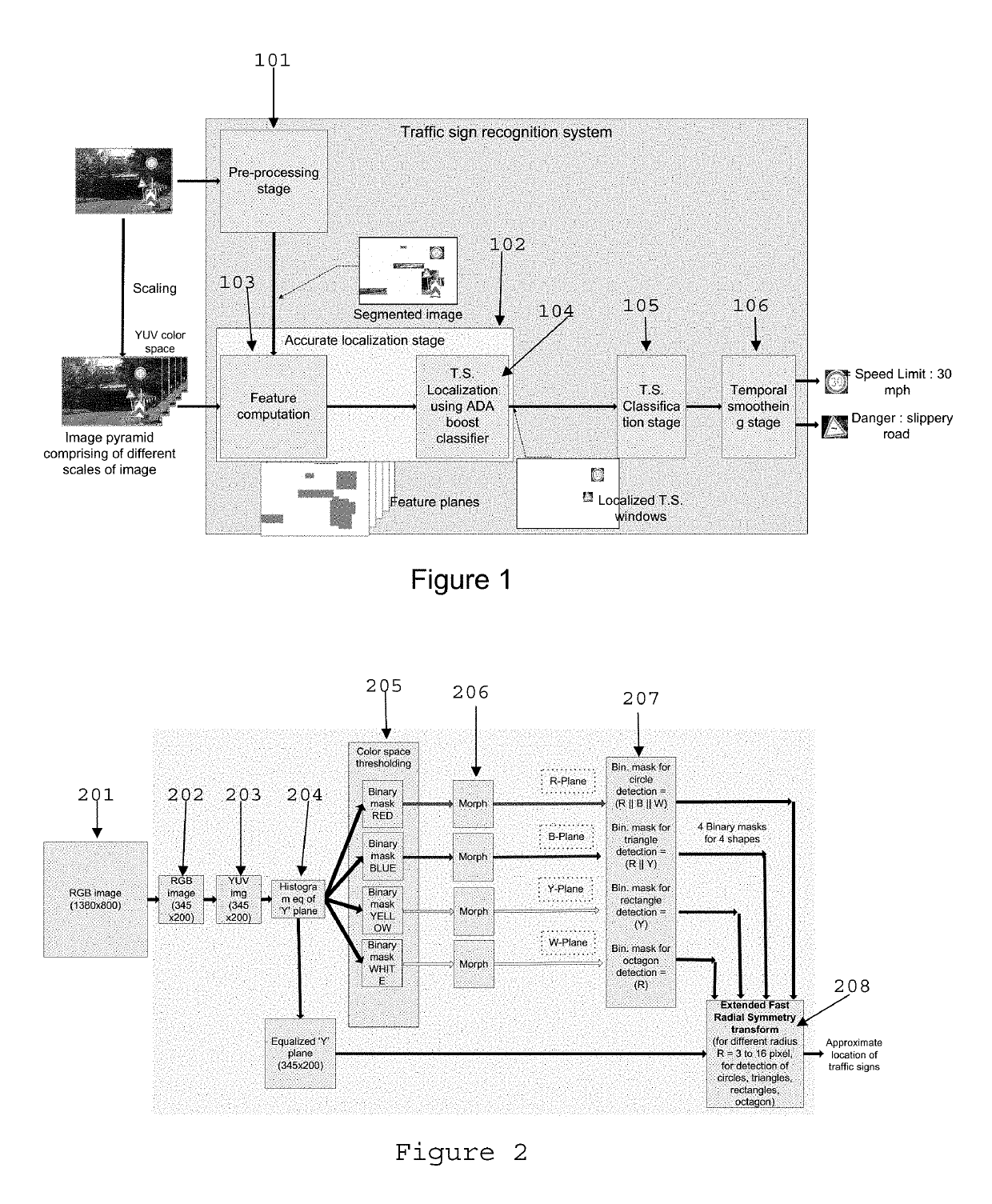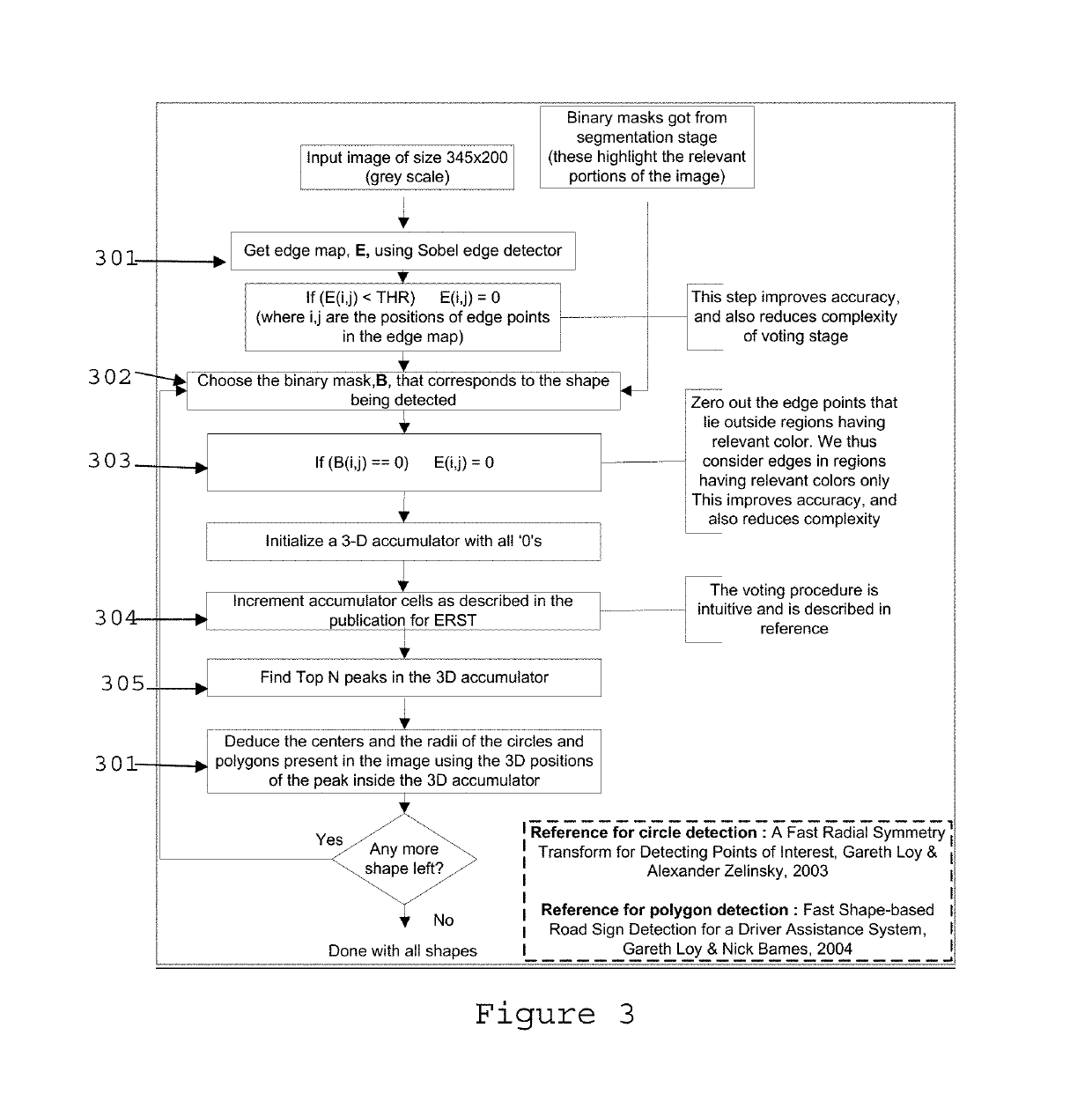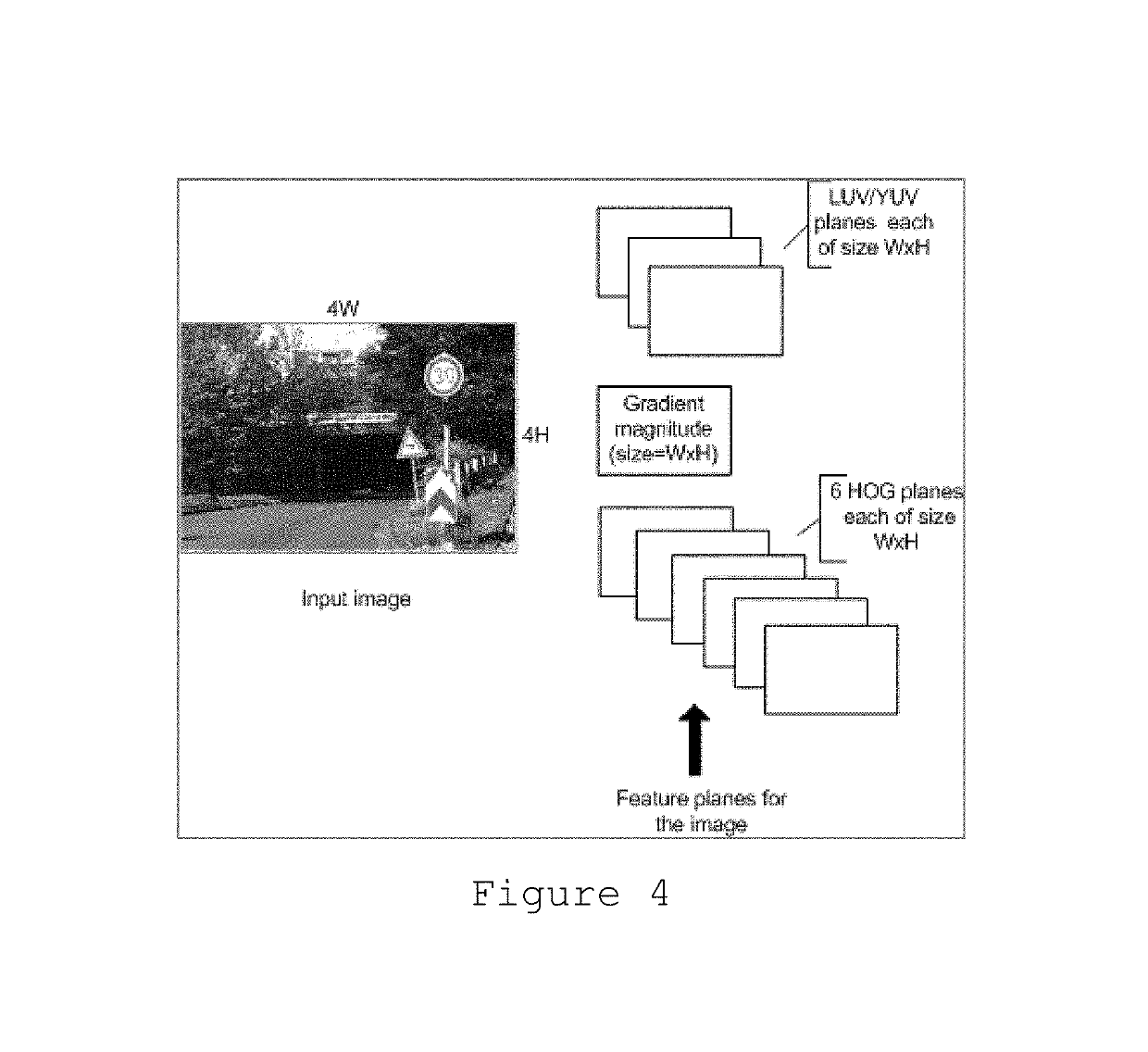Real time traffic sign recognition
a real-time traffic and sign recognition technology, applied in the field of image processing, to achieve the effect of accurate positioning of the sign and removal of nois
- Summary
- Abstract
- Description
- Claims
- Application Information
AI Technical Summary
Benefits of technology
Problems solved by technology
Method used
Image
Examples
Embodiment Construction
[0023]A four stage TSR algorithm is shown as described below. It is also shown pictorially by way of the system block diagram in FIG. 1.
Stage 1: Preprocessing Stage 101
[0024]Identify the approximate image regions having traffic signs without missing any traffic sign in input images.
[0025]Stage 2: Accurate Localization Stage 102
[0026]Stage 2a: Extract features from input images in feature computation block 103
[0027]Stage 2b: Accurate localization of the region(s) of the input image that contain the traffic sign(s) using classifier in 104.
Stage 3: Classification Stage 105
[0028]The windows localized by stage 2 are categorized into one of a plurality of categories.
Stage 4: Temporal Smoothening Stage 106
[0029]This stage is meant to remove the noisy detections and noisy classification that have been obtained from stage 3.
[0030]The preprocessing stage 101 works on the input image and is aimed at reducing the complexity of the TSR system by reducing the amount of data that is processed by s...
PUM
 Login to View More
Login to View More Abstract
Description
Claims
Application Information
 Login to View More
Login to View More - R&D
- Intellectual Property
- Life Sciences
- Materials
- Tech Scout
- Unparalleled Data Quality
- Higher Quality Content
- 60% Fewer Hallucinations
Browse by: Latest US Patents, China's latest patents, Technical Efficacy Thesaurus, Application Domain, Technology Topic, Popular Technical Reports.
© 2025 PatSnap. All rights reserved.Legal|Privacy policy|Modern Slavery Act Transparency Statement|Sitemap|About US| Contact US: help@patsnap.com



